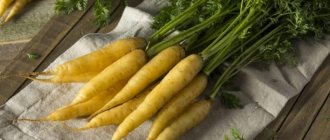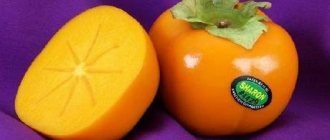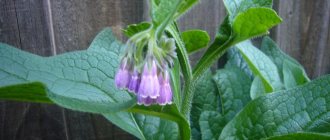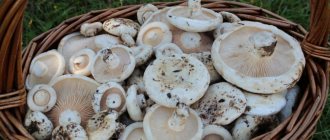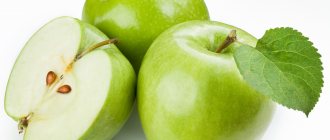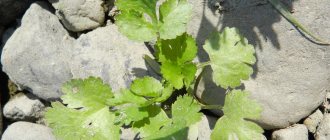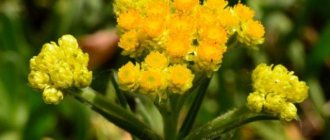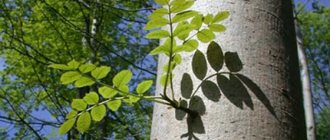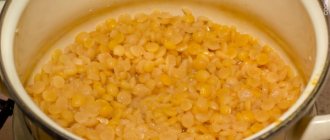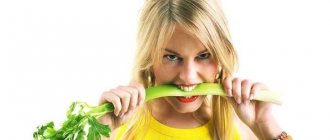Characteristics of the Legume family
Representatives of this systematic unit have a number of similar features. First of all, this is a fruit called a bean. It is dry and multi-seeded. The bean opens at the seams from the top to the base, and the seeds are attached to both doors.
The second name of this family - Moths - determines the structure of the flower. The fact is that all petals have a different shape. The top one is the largest, the two side ones are smaller, and the bottom ones grow together. Visually, this structure resembles a moth. The single pistil is surrounded by ten stamens. Nine of them are fused, and one is free.
The leaves of most legumes have reticulate veins. On the shoot they end with tendrils, with the help of which they can be attached to a support.
What is the root system of peas?
Plants have three types of roots: main, lateral and accessory. Their combination forms the root system. In some species the main root is absent or poorly developed. It is practically invisible among the numerous additional roots. In this case, a fibrous root system is formed.
In peas, the underground part has a different structure. The main root is well developed, with numerous lateral roots extending from it. Thus, the type of pea root system is taproot. In legumes it is well branched. The main root can penetrate to a depth of 1.5 meters, and the lateral roots develop in the arable layer.
The pea root system reaches its maximum development during the flowering period. It is very sensitive to soil moisture. The optimal figure is 60-80%. When groundwater is high, the root dies and the shoot turns yellow. But peas are quite resistant to short-term droughts. This is due to the ability of the root system to absorb moisture from deep horizons.
Peas as green manure
This term refers to natural green fertilizers. Along with the growth of pea roots, the soil is loosened and numerous air passages are formed, weed growth and cracking are prevented. In addition to the mechanical effect on the soil, peas also have a chemical effect - they restore its composition, enrich it with organic matter and minerals - potassium, nitrogen, phosphorus. You can sow peas as green manure both before planting the crop and after harvesting it.
Soil selection
To get a good pea harvest, you need to “prepare your sleigh in the summer.” This means that the seeds of this crop are sown in the spring, and the soil is pre-treated in the fall. It is better to choose an area where nightshade or cruciferous plants grew. For example, tomatoes, potatoes or cabbage. It is recommended to plant peas in the previous place only after four years.
Next, the soil must be dug up to a depth of 30 cm and fertilizer must be applied. Rotted manure is suitable for organic compounds, superphosphate and potassium salt are suitable for mineral compounds.
If the soil is too acidic, pre-liming is recommended. Since the root system of peas penetrates quite deeply, close groundwater should be avoided.
Before sowing, the seeds are soaked for up to 18 hours, changing the water every three hours. The optimal planting depth is 3 cm. The first shoots will appear within a week and a half.
Helpful "neighbors"
The peculiarity of the pea root system is also that it forms a symbiosis with nitrogen-fixing bacteria. Such mutual cohabitation benefits both organisms. Plants need nitrogen for the development of their root system. But they are not able to absorb this substance from the air. Bacteria convert atmospheric nitrogen into a form that plants can absorb from the soil.
During photosynthesis, autotrophic organisms form organic substances. Therefore, plants provide bacteria with carbon-containing compounds necessary for their life.
Scientists have proven that bacteria can exist without legumes. But in this case, they lose the ability to fix nitrogen from their atmosphere. As soon as a plant from the Legume family appears in the soil, bacteria penetrate its roots, forming thickenings - nodules.
Morphological structure
Peas belong to the legume family (Fabaceae). The most common type is the common pea (Pisum sativum). Let's look at its structure.
Root system
The root has a tap-like appearance and penetrates the soil to a depth of about 1 meter. On the roots there are nodule bacteria that absorb nitrogen from the air and convert it into compounds available to the plant.
The structure of the root of a pea seedling is very simple. First, one rod is formed without any additional branches . Over time, additional formations grow on the root.
Stem and leaves
The stem of the plant is herbaceous, round, hollow inside. In most cases lodging. Special supports are installed for peas, to which they cling with tendrils and grow upward. The length of the stem can reach two meters.
Meaning in nature
In terms of gross grain harvests, peas take first place among legumes. This is due to good yield and high nutrient content. First of all, these are essential amino acids, which in chemical composition and calorie content are close to proteins of animal origin. Vitamins C, B and PP predominate, minerals – phosphorus and potassium salts, organic substances – fiber and starch.
Peas also occupy an important place in crop rotation. The essence of this process is the annual alternation of different types of cultivated plants that are grown in the same area. Peas are used as a precursor to grain and vegetable plants. Its powerful root system loosens the soil well, and fertilizes the green mass with organic matter. The result is a fertile and porous base for future harvests. In addition, such soil is well protected from water and wind erosion.
So, peas are a representative of the Legume family, the distinctive features of which are:
- bean fruit;
- "moth flower";
- lodging shoot;
- simple leaves with opposite leaf arrangement;
- well-developed core system;
- development of symbiotic nodule bacteria on the roots.
Vegetable peas : photo, description, cultivation and care . Today, vegetable growers in more than 60 countries grow peas in their dachas and gardens. Pea fruits contain many valuable substances necessary for human nutrition. Proteins alone in peas range from 20 to 30%, easily digestible sugars make up 20–30%, and there are also the most important amino acids: arginine, methionine, etc.
The high phosphorus content necessary for brain function, starch, potassium salts, fatty acids, and a rich set of vitamins have made peas one of the first places among popular vegetables in many Asian and European countries. It was not by chance that folk healers used pea poultices to treat abscesses, various infiltrates, and boils. Diuretic medicines were prepared from decoctions of the plant. And currently, doctors advise consuming at least 3 kg of green peas per year. Vegetable varieties of peas are widely used for canning, and they retain most of the nutrients for a long time.
Peas, like many of their relatives from the legume family, form numerous nodule formations on their roots that fix atmospheric nitrogen, which becomes fertilizer. It has been established that on one hundred square meters in one summer, after harvesting peas, up to 10 kg of mineral nitrogen remains in the soil, and thus summer residents are relieved of the need to apply one and a half tons of manure to this area.
The deep root system of peas delivers nutrients from the lower layers of the soil, while simultaneously nourishing neighboring vegetables located next to the peas.
Peas are cold-resistant annuals, which are usually divided into 2 groups of varieties: shelling and sugar. The first ones are distinguished by the fact that a dense parchment layer is clearly visible on the inside of the bean. Only their grains are edible. The second group of varieties has juicy leaves, which makes it possible to consume the whole fruit. Depending on the morphological characteristics, varieties with smooth, round and wrinkled seeds are distinguished, the latter being called “brain peas”. All pea plants, regardless of variety, have tap roots extending up to 1 m from the soil surface. They are branched and powerful enough to absorb moisture and minerals from the lower layers of the soil.
Peas
PEA (Pisum) is an annual, self-pollinating herbaceous plant of the Legume family, a grain legume.
The homeland of peas is considered to be South-West Asia, where it was cultivated back in the Stone Age; in Russia, peas have been known since time immemorial.
The root system of peas is tap-type, well branched and penetrates deeply into the soil. Peas, like all legumes, enrich the soil with nitrogen. Beneficial microorganisms develop on its roots and in the root zone (rhizosphere): nitrogen-fixing bacteria, nodule bacteria, Azotobacter, etc. - capable of assimilating atmospheric nitrogen and having a significant impact on the accumulation in the soil of nitrogen necessary for plant nutrition.
The stem of peas is herbaceous, simple or branched, reaching a length of up to 250 cm. It can be lodging 50-100 cm or standard (bush) - in which the stem is unbranched 15-60 cm high, with short internodes and crowded flowers in the axils of the apical leaves.
The leaves are compound, odd-pinnate. The leaf petioles end in tendrils that cling to the support and hold the plant upright.
The flowers are mostly white or purple of various shades, moth-type, located 1-2 in the axils of the leaves. Standard forms have peduncles with 3-7 flowers, often collected in inflorescences. Flowering begins 30-55 days after sowing. In early ripening varieties, the first peduncle appears in the axil of 6-8 leaves (counting from the root), and in later ripening varieties - 12-24. The next peduncles appear every 1-2 days. Peas are a self-pollinating plant, but partial cross-pollination is possible.
The pea fruit is a bean, depending on the variety it has a different shape, size and color. Each bean contains 4-10 seeds arranged in a row. The shape and color of the seeds are varied, their surface is smooth or wrinkled. The color of the seed coat matches the color of the flowers of the plant.
There are two main groups of peas: shelling peas and sugar peas.
Shelling pea varieties differ from sugar pea varieties by the presence of a parchment layer on the inside of the bean leaves, which makes them inedible. Such peas are grown to produce green peas used for canning.
Sugar pea varieties do not have partitions (parchment layer) and are grown for their unripe beans (blades). Unripe, tender beans are eaten whole without shelling the seeds. There is also a semi-sugar type of vegetable pea, where the parchment layer is weakly expressed and noticeable only in dried beans.
Within each of these groups there are varieties with round, smooth grains and wrinkled grains (brain varieties). The best seeds are brain seeds. They are angular-square in shape, with a wrinkled surface and produce sweet, high-quality peas.
Peas are the richest source of protein among vegetable crops. Pea proteins are similar to meat proteins because they contain a number of essential amino acids (cystine, lysine, tryptophan, methionine). Peas also contain a lot of ascorbic acid (up to 59 mg%), various sugars (more than 7%), starch (1-3%), vitamins C, PP, group B, carotene, and fiber. The nutritional value of peas is 1.5-2 times higher than potatoes and other vegetables; in addition, peas are rich in potassium, calcium, phosphorus and iron salts.
The pea plant is one of the most cold-resistant vegetable crops, this is especially pronounced in varieties with round, smooth seeds. Sprouts of smooth-grain varieties can withstand frosts down to −6°C. Therefore, peas can be sown in early spring. The optimal temperature for seed germination and subsequent plant growth is 16-25°C. Peas are one of the best bush crops. By the time of sowing or planting heat-loving crops, it manages to form tall stems that reliably protect them from the wind.
Being a plant of temperate latitudes, peas respond positively to long days. The growing season of peas in the northern regions is shorter than in the South, and with a short 10-hour day, some varieties do not even bloom. It does not tolerate shade well and grows well in sunny areas.
Peas are demanding of soil moisture, especially during seed germination and in the first growing season. Tolerates excess moisture, but does not tolerate high groundwater levels. Thanks to its powerful root system, peas are resistant to short-term droughts. The best soils for peas are light loams and sandy loams with a neutral reaction. On low-fertility soils, the application of both organic (humus, compost) and mineral fertilizers (especially responsive to phosphorus-potassium fertilizers) is effective.
Caring for plants consists of loosening the soil, providing plants with moisture, destroying weeds, and timely installation of supports. Low-growing standard varieties do not need support. If the pea crops will serve as protective curtains, then trellises will be built.
The pea crop is harvested many times as the beans form. Remove the beans that are well filled with peas and have not begun to lose their bright green color. As peas ripen, the amount of sugars decreases, and the amount of protein and starch increases.
Peas are used for food in the form of unripe seeds (green peas), consumed fresh, canned, dry and frozen. They prepare soups from it, side dishes for various meat dishes, purees, salads, and also serve to decorate various dishes. In Ancient Rus', peas were the main food on fast days and are still the main legume crop in Russia.
Sowing vegetable peas
It is better to sow peas at several times, taking into account the different lengths of the growing season of varieties. Start the first sowing at the end of April - early May, the last - at the end of May. Some pea lovers sow them in mid-summer, 2 months before frost. Flowers and young ovaries are sensitive to sudden drops in temperature to sub-zero.
The seeding depth on light soils is 4–5 cm, on heavy soils – 3 cm. The best sowing pattern is two-line, it is more convenient for care and cleaning.
- The distance between the ribbons is 50 cm, between the lines – 2 cm for peeling varieties.
- For sugar varieties, the distance between the ribbons is 40 cm, between the lines – from 4 to 6 cm.
Helpful advice! In an area where peas have not been cultivated before, apply nitragin, which is an excellent bacterial preparation for legumes. It will enhance the absorption of nitrogen from the air.
To sow, first make furrows; after watering and closing the furrows, do not forget to cover the crops with film or thick paper to protect the crops from birds. Most birds eat newly planted peas, even those treated with poisons.
Important! Watering is required during the period of seed germination and emergence of seedlings.
You cannot sow vegetable peas in the place where this crop was planted last year. Other representatives of the legume family (beans, beans) are also not suitable as precursors. But predecessors such as cucumbers, tomatoes, cabbage, and potatoes will create optimal conditions for the successful growth of peas on the site. It is best to return the peas to their original place after 4 years. Grasses that improve soil fertility and structure, such as clover or alfalfa, should not be placed near the pea bed. This can increase the number of bacteria and other microorganisms.
The best predecessors for peas are cucumbers, pumpkin, potatoes and cabbage, and peas themselves are the best predecessors for all crops without exception.
Helpful advice! Potassium and phosphorus fertilizers should be applied to the pea predecessors, then its fruits will have a more delicate taste. According to personal observations, growing peas in a plot that has just been fertilized is impractical - the peas will be very leafy, but there will be very few pods.
In the spring, immediately before sowing peas, you only need to apply compost - directly into the furrow, 15 g of urea and half a teaspoon of boric acid per 1 square meter. m.
Vegetable peas sown not only with sprouted seeds, but also with dry seeds; pea seeds are heated before sowing by dipping for 5 minutes in a hot - about 40 °C - solution of boric acid (2 g of acid per 10 liters of water). Thanks to this simple method of pre-sowing treatment, the likelihood of plants being damaged by the larva of the nodule weevil, one of the dangerous enemies of peas, is significantly reduced.
The seeding rate is about 80-130 seeds per 1 square meter. m. Planting pea seeds is necessary to a depth of about 3-5 cm, depending on the soil. For example, on clay soil, seeds need to be planted deeper, but on sandy, light soils, seeds should be planted, on the contrary, shallower.
Helpful advice! If you need to get green peas for canning early, you can first plant the seedlings in boxes or a greenhouse.
To obtain seedlings, start sowing a month earlier than with the seedless method. In open ground, first make beds about 1 m wide and make grooves across the beds with a distance of 30 cm between plants. Do not forget to thoroughly water the furrows before planting.
Answer prepared by Uchis.Ru experts
In order to give a complete answer, a specialist was brought in who is well versed in the required “Miscellaneous” topic. Your question was as follows: 'Laboratory work: The structure of the root of a seedling (pea, pumpkin). Growth (extension) zone at the root. Purpose: to study the external structure of the root.'
After a meeting with other specialists of our service, we are inclined to believe that the correct answer to the question you asked will be as follows:
1. Examine the root of a sprouted pumpkin seed (or radish, peas, beans) with the naked eye. Note its length, thickness and color. Find the root cap at the end of the spine.
The main root is the root that develops from the embryonic root. It has the most active apical meristem. Adventitious roots are roots developing from stems and leaves. Lateral roots are roots that develop on another root of any origin and are formations of the second and subsequent orders of branching. Based on their origin, roots are divided into main, lateral and adventitious.
2. Pay attention to the part of the root above the root cap and growth zone. Find outgrowths in the form of fluff - root hairs. Read the textbook about their structure and meaning.
3. Examine the finished microslide “Root cap. Root hairs." Pay attention to the growth (stretch) zone.
4. Compare what you saw under the microscope with the picture in the textbook, sketch and label it.
CONCLUSION The taproot of a pea seedling. The tip is distinguished by its darker color and dense structure - this is the root cap (the main function of the root cap is protective, because it prevents the possibility of damage to the fragile growing tip of the plant root upon contact with solid soil components). At some distance from the tip along the entire length of the root there are many colorless hairs, which are called root hairs (outwardly they are practically no different from the root and, thanks to them, water is absorbed from the soil). The length of the pea root cap is up to 5 mm. The length of the root hair zone is up to 2 cm (about half the length of the root). The parts of the pea sprout root vary depending on the functions they perform. For example, the cover has a denser structure, because plays a protective role, while root hairs are more delicate, thin and long, because thanks to them, water is absorbed from the soil.
Pea care
Caring for peas will not cause you much trouble, since it just involves covering the seedlings, weeding, watering and, of course, timely harvesting.
Peas need to be fertilized twice a day with a mineral mixture before watering (15 g of potassium chloride, 10 g of urea and 30 g of superphosphate per 1 m2).
Prevent the appearance of weeds in the area; when weeding, remove the crust after rains and waterings.
As soon as the first pea shoots appear, they need to be protected from birds; to do this, I cover the shoots with an ordinary fishing net.
When the seedlings grow, substitute twigs, preferably with a rough surface: the tendrils cling to them faster and support the peas in an upright position.
Repeatedly planting vegetable peas , the plant simply cannot tolerate heat, so in dry weather it must be watered very generously - 9-10 liters of water per 1 square meter. m. It is advisable to combine watering with fertilizing, for which we dilute 1 tablespoon of nitroammophoska in 10 liters of water. Immediately after watering, the soil around the peas should be mulched. In general, the soil around pea plants, especially in the initial period of their growth, needs to be loosened, and the plants themselves need to be hilled.
Peas also require the construction of supports - immediately after planting the seeds, you need to drive pegs directly next to the plant, at a distance of a meter from each other. I attach a special metal mesh with large cells to the pegs - about 10x10 cm; in the future it will prevent the peas from breaking and falling.
Helpful advice! Supports for peas can also be made from twigs about 150 cm high; twigs of alder, pine, aspen, and spruce are suitable. The more small branches there are, the better; there is no need to remove side shoots on the rods. Only low-growing varieties are grown using supports without twigs.
When the peas reach a height of 15 cm, carefully place supports so as not to damage the root system. Don't throw away the supports in the fall - they will come in handy next year.
Peas bloom 28-60 days after sowing. About a month after mass flowering, I begin harvesting, which, by the way, perfectly stimulates the growth of peas. Since peas belong to multi-harvest crops, their fruiting period is quite extended and lasts about 33-42 days. I try to collect pea blades quite often - literally every other day or two.
If your goal is to obtain mature bean grains rather than green ones, the peas should be left to ripen on the bush until the lower pods of the plant are completely ripe. After this, we cut the plant at the root, tie it into small bunches and hang it for final ripening for one and a half to two weeks in a ventilated room. Remember, pea seeds remain viable for 2 years.
Harvesting and storing vegetable peas
Harvest peas carefully to avoid damaging the fruit. Harvest selectively as the beans ripen. Do not let the peas sit in the beans for too long. To harvest seeds from your own garden, leave the plants on the site until they are completely biologically ripe.
Helpful advice! Since peas are harvested early, in the second half of summer, so that the area is not empty, it can be used for sowing radishes.
After harvesting, the above-ground pea system should be embedded in tree trunk circles, thereby enriching the soil with readily available fertilizers. The soil should be prepared in advance, in the fall: you need to dig it deep as soon as the harvest of the pea predecessor is completed. In the spring, carry out repeated deep loosening.
For autumn digging, add half a bucket of humus or compost, 35 g of superphosphate, 30 g of potassium chloride per 1 m2.
Note! For green peas, the shelf life in beans is 12 hours, and for shelled peas it is only 4 hours. After this, the peas lose their sugar content and become starchy.
After the beans have ripened, remove the plant from the ground, shake off the soil, tie into small bunches and store under a shelter or in a dry room. Separate the dried beans from the plants, remove the seeds and pour them into linen bags.
Types and varieties
The pea species (Pistum sativus) is genetically diverse. Its subspecies differ in leaves, flowers, fruits and seeds. But this classification is of interest only to botanists. Practitioners divide pea varieties according to ripening into early, mid-ripening and late-ripening, and according to their intended purpose they distinguish varieties:
Hulling (Pisum sativum convar. sativum) varieties
Varieties with smooth seeds containing a lot of starch and not many free sugars.
- Carrots: growing in the garden, storage, types
The best varieties of shelling peas:
- Dakota is a disease-resistant early and productive variety with large peas;
- Vegetable miracle is a mid-season, disease-resistant variety with pods 10-11 cm long and seeds of excellent taste, intended for both fresh eating and canning;
- Dinga is a German early ripening variety with slightly curved beans 10-11 cm long and dark green seeds in an amount of 9 to 11 pieces. The variety is suitable for fresh eating and canning;
- Somerwood is a large-grained, mid-late, disease-resistant and productive variety with six to ten peas per pod 8-10 cm long;
- Jof is a mid-late, disease-resistant variety with sweet seeds in beans 8-9 cm long;
- Bingo is a late-ripening, disease-resistant, high-yielding variety with excellent taste, with an average of 8 seeds per pod.
Brain (Pisum sativum convar. medullare) varieties
Their peas are wrinkled at the stage of biological ripeness, but they are used in the phase of technical ripeness. They have a lot of sugar, so they are frozen and used for canning.
The most popular varieties:
- Alpha is the earliest variety of bush (non-lodging) form with a growing season of only 55 days, a slightly curved saber-shaped pod with a sharp apex up to 9 cm long with 5-9 seeds inside. Variety of excellent taste;
- Telefon is an amateur, very late, high-yielding variety with a long (up to three meters) stem and beans up to 11 cm long with 7-9 sweet, large green seeds;
- Adagumsky is a mid-season variety of high taste with greenish-yellow seeds when ripe;
- Vera is an early high-yielding variety with pods 6 to 9 cm long with 6-10 peas.
Sugar (Pisum sativum convar. axiphium) varieties
Varieties with small and very wrinkled seeds that do not have a parchment layer in the pod, so they can be eaten along with the pod.
The best varieties:
- Ambrosia is an early ripening variety that requires support when growing;
- Zhegalova 112 - a high-yielding mid-season variety with straight or slightly curved beans 10 to 15 cm long with a blunt top and 5-7 sweet, tender seeds;
- Sugar Oregon is a mid-early variety with pods up to 10 cm long, in which 5-7 seeds ripen;
- Miracle of Kelvedon is a high-yielding early-ripening variety with 7-8 large, smooth dark green peas in pods 6-8 cm long.
Pests and diseases of peas
Perhaps the most malicious enemy of peas is the leaf roller or pea codling moth, whose caterpillars overwinter in the soil. The flight of pea codling moth butterflies from the cocoon, as a rule, coincides with the moment the peas begin to bloom. Each codling moth butterfly lays about two hundred eggs on leaves, beans, stems and flowers of peas. After about a week, small caterpillars emerge from these eggs, which, getting inside the beans, eat the peas, and gardeners are left without a harvest.
There are many methods to combat the pea codling moth, but I only use a couple, and I will share them with you. So, to combat the pea moth, I periodically spray the plants with an infusion of tomato tops and garlic. To prepare the first, I take about three kilograms of tops per 10 liters of water, and to prepare the second, I take 20 g of garlic, passed through a garlic press, and, pouring 10 liters of water, leave it for a day. I filter the infusion and spray it on the pea plants. By the way, both tomato and garlic infusions help very well against such pests as pea aphids.
A fairly common disease of peas is powdery mildew, I prefer to fight it using an infusion of field sow thistle - I leave 300 g of plant leaves overnight in a bucket of water. Spray the peas with this infusion twice, with an interval of about 7-8 days.
Read more about pea diseases in our article: Pea diseases: photos, causes and control measures
Pests of legumes
Legume crops are caused great harm by polyphagous pests: meadow moth, pea aphid, copperhead, pea thrips, five-spotted weevil, nodule pea weevils, bean weevil and others, but still the most dangerous are those that prefer peas, beans and beans. They primarily damage the seeds.
Note! The best predecessors of beans in the middle zone are cucumbers, potatoes, tomatoes, white and cauliflower, beets, and carrots.
Such pests include bruchus, or pea weevil.
Video: Planting peas on a net
Growing peas in open ground is not very difficult. The main thing is to have an understanding of the propagation and varieties of crops, as well as to follow basic care techniques.
Description and varieties
The herbaceous plant pea (Pisum) is considered a member of the Legume family. It comes from South-West Asia, where it began to be cultivated in ancient times. Green peas contain carotene (provitamin A), vitamin C, PP, B vitamins, as well as manganese, phosphorus, potassium and iron salts. Peas also contain lysine, which is one of the rarest amino acids.
Today, 3 varieties of this plant are cultivated, namely: grain, vegetable and fodder peas - this annual is self-pollinating and is distinguished by its rapid development. This culture is famous not only because it is the basis of vegetable protein and contains many substances useful for the human body, but also because it is an excellent green manure. Peas are a good predecessor for all crops cultivated in the garden.
Peas have a deep root system. The level of the branching hollow stem can reach up to 250 centimeters, which directly depends on the type (standard or ordinary). The complex odd-pinnate leaf blades have petioles ending in tendrils. They tie the plant to a support, which helps keep the bush in an upright position. Bisexual, self-pollinating flowers are usually white, but purple ones are also found.
Pea flowering begins 30-55 days after sowing the seeds. In an early type of bush, the first peduncle pecks from the axils of 6-8 leaf blades, while in late-ripening varieties - from the axils of 12-24 leaves. A fresh peduncle grows once every 1 or 2 days. The fruit is a bean, which can have different colors, shapes and sizes depending on the variety. Inside the beans there are 4-10 seeds, which can be wrinkled or smooth. You should know that the skin of the pod and the seeds inside are the same color.
Peas, like all other plants belonging to the Legume family, help enrich the soil with nitrogen. During the growth of the bushes, the development of the necessary microorganisms is observed on their root system. These bacteria fix nitrogen, which they absorb from the air.
Varieties and varieties
There is another aspect to pea breeding - a large number of varieties. In order to navigate the seed market well, you need to know their features:
- Sugar snap peas. In this type of pea, both the peas and the pod where they are “located” can be absorbed. Sugar peas are especially valued by professionals for this quality. There is no hard permanent layer in the pod doors. When the seeds are formed, they become slightly shriveled because they contain so much moisture. Sugar snap peas are more “finicky” regarding ideal soil (its fertility and moisture) than shelling peas; loves warmth, is more susceptible to various illnesses and parasites. It takes a very long time to boil, which is why sugar peas are used for industrial preservation. It also lends itself well to freezing.
Attention! When to sow peas in open ground is written on the seed package!
- Shelling peas. Varieties of this group, unlike sugar ones, are formed into a hard pod with a thick permanent layer. Only the seeds are suitable for food. Formed peas contain a huge amount of starch, which is why they boil surprisingly quickly. In this regard, shelling peas are often added to soups. For freezing and canning, only those peas are used that are harvested when they reach technical maturity.
The most common sugar pea varieties are:
- “Oregon” and “Ambrosia”, “Baby Sugar” and “The Miracle of Kelvedon” - will be sung early;
- “Zhegalova 112” and “Moscow Delicacy” - they sing averagely;
- “Inexhaustible 195” is a late variety.
Among the peeling species, the most common are:
- Early ripening - “Faith” and “Sphere”, “Hizbana” and “Misti”;
- Mid-season - “Asana” and “Sherwood”, “Ashton and Abador”;
- The later ones are “Era” and “Nicholas”, “Twin”, “Pecan” and “Matrona”.
The approximate time for planting this type of legume in open ground depends almost one hundred percent on the chosen crop variety. And at the same time, many new varieties appear on the market every year. That is why it is very important to read the instructions for the seeds and navigate their diversity.
Modified plant organs
> The soil
05.04.2020
It is believed that humanity owes peas to South-West Asia, more precisely to modern Afghan, Indian, Ethiopian, and Transcaucasian territories.
Thanks to archaeological research, it has become possible to trace how this culture spread throughout the world. So, more than 20 thousand.
years ago, in Neolithic times, in the territory of modern Serbia, Croatia, France, Italy, Germany, Austria and other European countries, this vegetable was cultivated along with cereals: millet, barley, wheat.
Archaeological research reports the widespread use of peas by representatives of the Cretan-Mycenaean civilization, which ended its existence one and a half thousand years before the advent of the new era. Moreover, they not only ate it themselves, but also fed it to their pets. In the 1st century BC. e. this vegetable reached China through India, and then to Japan.
https://www..com/watch?v=ytdevru
It is known that the inhabitants of medieval Europe very willingly included peas in their diet, because they can be stored in dry form for a long time, they are cheap and nutritious.
Thanks to these qualities, the vegetable was in great demand among the poorer sections of the population of England, France, Scandinavia and other countries. It was often prepared with lard, and such a dish could provide a person with the energy necessary in the moderate conditions of the European winter.
Structure
Peas are an annual herb belonging to the genus of herbaceous plants and a member of the legume family. Latin name: Pisum. The ground part of the pea is covered with a waxy coating, which, however, is absent in some species.
Root system
The root system of the plant in question is taprooted, it is able to penetrate up to 1.5 m deep, and it branches widely. If the soil where the crop grows already contains nodule bacteria (those races that can absorb nitrogen directly from the atmosphere), nodules may form on the root areas.
This phenomenon greatly affects the possibility of accumulation of nitrogen in the soil, a nutrient essential for all plants. After peas, thanks to the accumulated nitrogen (about 100 g of substance per 1 m²), any garden crops grow well, especially cabbage, pumpkin and nightshade crops, as well as various root vegetables.
Stem
Peas have a herbaceous, weakly climbing, easily lodging, rounded stem, the length of which varies from 25 cm to 3 m, depending on the variety and growing conditions, as well as cultivation. Length is a characteristic by which the stem is divided into the following groups:
- dwarf or low - below 1.5 m;
- semi-dwarf - from 51 to 80 cm;
- average - from 81 to 150 cm;
- high - from 1.5 to 3 m.
The stem is:
- simple, otherwise lodging, which grows from 0.5 to 1 m;
- fasciated, otherwise standard or bush, it has from 7 to 21 nodes, depending on how early the variety is.
The internodes of this species are short, and the flowers are crowded in the axils of the leaves.
Leaves
The leaf arrangement of peas is opposite, which means that in a node there are 2 leaves, one opposite the other. The stipule is quite large, its shape resembles half a heart. On it and the leaves of the plant there is a grayish, silvery pattern, reminiscent of a mosaic. Its size and location vary and this is a varietal characteristic of the crop.
- acacia-shaped - a leaf devoid of tendrils, with an unpaired leaf at the top;
- whiskered or leafless - odd-pinnate whiskers formed instead of leaves;
- multiply pinnate - a highly branched vein ends with 3-5 tiny leaves.
Important! One of the signs of pea grade is the color of its leaves, but it also largely depends on the conditions in which it grows and on the care of the crop.
The shapes of the leaves are:
- oblong;
- ovoid;
- obovate;
- rounded.
The following leaf edges are distinguished:
- entire;
- toothed;
- serrated;
- crenate.
Color may vary in the following shades:
- yellow-green;
- light green;
- dark green;
- bluish-green.
Flowers
Pea flowers are located on long peduncles, painted yellow, sometimes very short, almost sessile.
The inflorescence of the culture is racemose; its standard representatives may have a pseudo-umbellate one. The corolla of pea flowers is very interesting - a moth-like one, consisting of 5 petals:
- its sail has an obovate shape, with a notch in the upper part;
- 2 wings or oars are elongated crescent-shaped, have the most intense color in contrast to the sail;
- the boat consists of two petals fused together; in most cases it is colorless.
The corolla of grain varieties of peas is most often white, while forage varieties have a pink, purple or red-purple hue. The flower is equipped with a fused-leaved five-toothed calyx, its appearance reminiscent of a bell.
Of the ten available stamens, nine are fused with each other, but one, which is adjacent to the ovary, is free. The ovary has from 10 to 12 ovules. After sowing, peas bloom within 30–55 days.
Important! Despite the fact that peas are a self-pollinating crop, partial cross-pollination is quite possible.
https://www..com/watch?v=ytpressru
The fruit of the pea is a bean consisting of 2 leaves with 3–12 seeds inside. The structure of the valve can be peeling or sugar, it can also be semi-sugar:
- peeling ones are equipped with a hard layer on the inside, reminiscent of parchment;
- sugar ones lack such a layer;
- in semi-sugars it is only partially developed.
The shelling doors are the easiest to thresh. A varietal characteristic is the color of an unripe bean, which can be:
- yellow;
- light or dark green;
- purple.
In length they can be:
- small - 3–4.5 cm;
- medium - 4.5–6 cm;
- large - 6–10 cm;
- very large - 10–15 cm.
One of the varietal characteristics of a crop is the size of its seeds:
- small: the diameter of one seed is 3.5–5 mm, the weight of a thousand seeds is 150 g;
- medium: the diameter of one seed is 5–7 mm, the weight of a thousand is up to 250 g;
- large: the diameter of one seed is 7–10.5 mm, the weight of a thousand exceeds 250 g.
Their form can be:
- angular-rounded;
- angular;
- oval-elongated;
- spherical;
- flat-compressed.
Pea seeds can have a smooth, wrinkled, or indented surface, and their skin is most often colorless. The color of the cotyledons can be:
- yellow;
- green;
- dark green;
- brown;
- purple.
The last two options are inherent in forage varieties. They may also have spots, stripes, or dots.
Biological requirements
Peas have certain biological requirements:
- cold resistance: the culture is undemanding to heat, its seeds are able to germinate at a temperature of 1... 2 ° C, and seedlings can withstand 6–8 degree frosts;
- drought resistance: moderately demanding, tolerates spring drought before the formation of buds quite easily, but when the stage of budding and fruit formation begins, the plant becomes very sensitive to lack of moisture;
- high requirements for soil: loves moist chernozem soils rich in lime, as well as gray forest, cultivated sod-podzolic soils with an acidity level of pH 6–7; Heavy washed away, sandy, saline soil is not suitable for the crop;
- light-loving: peas require long daylight hours, they are faster than other legumes, having a growing season of 70–120 days;
https://www..com/watch?v=ytcopyrightru
Farmers and gardeners should be wary of the main crop pests:
- pea codling moth;
- pea grain;
- pea aphids and others.
Peas may be affected by the following dangerous diseases that the gardener will have to fight:
- ascochyta;
- powdery mildew;
- fusarium;
- rust.
It is better to take care of their prevention in advance.
Chemical composition and calorie content
| Nutrient | Quantity | Norm |
| Calorie content | 299 kcal | 1684 kcal |
| Squirrels | 23 g | 76 g |
| Fats | 1.6 g | 60 g |
| Carbohydrates | 48.1 g | 211 g |
| Alimentary fiber | 10.7 g | 20 g |
| Water | 14 g | 2400 g |
| Ash | 2.6 g | ~ |
| Vitamins | ||
| Vitamin A, RE | 2 mcg | 900 mcg |
| beta carotene | 0.01 mg | 5 mg |
| Vitamin B1, thiamine | 0.9 mg | 1.5 mg |
| Vitamin B2, riboflavin | 0.18 mg | 1.8 mg |
| Vitamin B5, pantothenic | 2.3 mg | 5 mg |
| Vitamin B6, pyridoxine | 0.3 mg | 2 mg |
| Vitamin B9, folates | 16 mcg | 400 mcg |
| Vitamin E, alpha tocopherol, TE | 0.5 mg | 15 mg |
| Vitamin H, biotin | 19.5 mcg | 50 mcg |
| Vitamin RR, NE | 7.2 mg | 20 mg |
| Niacin | 2.4 mg | ~ |
| Macronutrients | ||
| Potassium, K | 731 mg | 2500 mg |
| Calcium, Ca | 89 mg | 1000 mg |
| Magnesium, Mg | 88 mg | 400 mg |
| Sodium, Na | 27 mg | 1300 mg |
| Sera, S | 170 mg | 1000 mg |
| Phosphorus, Ph | 226 mg | 800 mg |
| Chlorine, Cl | 57 mg | 2300 mg |
| Microelements | ||
| Iron, Fe | 7 mg | 18 mg |
| Cobalt, Co | 8.6 mcg | 10 mcg |
| Manganese, Mn | 0.7 mg | 2 mg |
| Copper, Cu | 590 mcg | 1000 mcg |
| Zinc, Zn | 2.44 mg | 12 mg |
| Digestible carbohydrates | ||
| Starch and dextrins | 44.7 g | ~ |
| Mono- and disaccharides (sugars) | 3.4 g | max 100 g |
| Saturated fatty acids | ||
| Saturated fatty acids | 0.2 g | max 18.7 g |
We invite you to familiarize yourself with New Year's trout
Important! The starch found in peas is used in the production of bioplastics that are biodegradable in the environment.
Features of eating peas
Peas have been eaten since ancient times to the present day, since they are undoubtedly a healthy vegetable, moreover, very inexpensive and subject to long-term, easy storage. However, its thoughtless use can in some cases cause harm to the human body.
Benefit
- The benefit is that this plant:
- more than other gifts of nature, it is rich in some vitamins and minerals necessary for the prevention of various diseases;
- can replace meat or other protein products, for example, during fasting;
- contains natural antioxidants, flavonoids, which reduce the level of acidity in tissues and inhibit malignant processes;
- contains thiamine, which slows down the aging processes in the body, protects its cells from damage caused by harmful factors such as nicotine or alcohol, stimulates brain function and energy production in the body;
- stimulates metabolism, relieving constipation, removes excess fluid;
- fights excess weight because it contains very little fat, and in some varieties there is none at all;
- allowed for people with diabetes, since the carbohydrates it contains - glucose and fructose - enter the blood without the help of insulin;
- helps strengthen the cardiovascular system, which, in turn, is very important for preventing hypertension and heart attack;
- used in home cosmetology to make masks that improve complexion, relieve swelling and prevent the occurrence of acne.
Important! Dried peas can be stored for up to 12 years if the conditions are met. It does not lose its beneficial properties.
- There are also a number of diseases in which the vegetable must be completely excluded from the diet or its use must be significantly limited:
- gout and/or old age: due to the presence of a large amount of purines, which contribute to an increase in the level of uric acid in the body and the accumulation of its salts - urates - in tendons, joints and other tissues;
- lactation: due to increased gas production and the likelihood of colic in the baby;
- diseases of the gastrointestinal tract: depending on which organ is affected and to what extent and the stage of the disease, the doctor may recommend excluding or limiting the use of this product for life or temporarily.
https://www..com/watch?v=upload
Peas are a valuable gift of nature, which people have appreciated since ancient times and to this day pay tribute to it. It is eaten in many types and varieties. Nowadays, storing this product is possible not only in dry form, but also canned and frozen, which allows you to diversify the menu all year round, and not only during the fleeting period of its maturation.
Modified plant organs Link to main publication
Source: https://only-mercedes.ru/kakoy-pobeg-gorokha/
Features of planting peas
Before talking about how to achieve a pea harvest for the entire summer period, you need to remember that this crop contains its own agrotechnical methods for breeding.
Seed preparation
The first of these is pea seed control. Because legume seeds are vulnerable to attack by parasites and are often sold damaged, they must be soaked before sowing. This simple technique not only allows you to detect non-viable peas, delays the reproduction of unfavorable “aliens” in your beds, but also stimulates the germination of seed material.
At the same time, you should not wait for the roots to appear; only sprouted healthy pea seeds should be planted in the soil, without obvious signs of the presence of parasites under the skin.
Soil preparation
Peas are considered a warm and photophilic plant that grows well in quiet, quiet and well-warmed areas. It is quite important that the soil at the site for planting is minimally fertilized - the application of mineral fertilizers and organic matter is sufficient. It would be great to treat the soil with lime, up to 250-300 g/m2, and add 30 grams of potassium and 20 grams of double superphosphate.
Be prepared for the fact that you will need to correctly navigate the placement of seeds when sowing. In heavy and clayey soils, peas are grown almost on the surface; in lighter soils, planting occurs deeper.
Prepare in advance to install supports for mature bushes, since the plant cannot simply be thrown on the ground; in this form it will not give the expected result.
Planting in open ground
Sowing peas in the country takes place approximately in the middle of spring, but at a time when the earth is sufficiently warmed up. Sowing is carried out with a specific density - low-growing peas are sown more densely, taller peas are sown less frequently.
Preparing a bed for sowing is very simple. First, hollows 5-7 centimeters deep are made in the bed. The distance between them is 50-60 centimeters. The furrows should be prepared in advance, a few days before planting, and a mixture of ash and compost should be added to them, which is sprinkled with soil from the garden bed. After preparation and investment, the depth of the sowing bed should be 3-5 centimeters. But here, do not forget to focus on the composition of the soil!
The plant is sown 15-17 times per meter of bed, in other words, approximately every 6 centimeters. The crops are sprinkled with soil and lightly pressed to retain moisture. After just one to a week and a half, you will be able to notice shoots.
Let's sum it up
Peas are a crop worthy of your garden. Knowing the structural features and requirements of the plant to climatic factors, you will be able to harvest a large amount of juicy green peas. The main thing is an abundance of sunlight and watering, as well as the installation of supports so that the plant's tendrils can be attached to them.
Plant protection - news Plant protection - forum Pests and diseases of trees and shrubs Growth accelerators and plant protection products Folk plant protection products Preparing plants for winter All about lawns and lawn grasses, grass seeds Seeds of ornamental plants Medicinal plants Poisonous plants Treatment of oncology with herbs Treatment with herbs Landscaping Ready-made projects Flower beds, flower beds Hedges, trellises Park art - castles, monasteries, estates Roses Agricultural technology of roses Clematis Garden furniture Forged products Land reclamation Methods of reclamation Sludge pits Soil pollution About the procedure for land conservation Liming of soil Mineral fertilizers Organic fertilizers Reclamation Irrigation and irrigation Hydroponics Green manure Soils Swamps Lake Baikal Insects all about bees Garden and vegetable garden Vegetables Gardener's calendar Gardener's calendar Fish farmer's calendar Mushrooms Environmental news News archive Link exchange Site catalog Site map
Pea care features
Active care of peas begins when the sprouts reach two weeks of age. The plantings are carefully loosened and the young bushes are hilled up. Weeds must be removed regularly throughout the season. When the greenery reaches a height of 0.2-0.25 meters, you can install supports.
Feeding and watering
Fertilizers are applied for the first time when the plant reaches a height of 5-8 centimeters. Granulated nitrogen is excellent in this case. After the procedure, the garden bed needs to be watered abundantly.
Before flowering begins, the soil is fed with diluted fertilizers containing useful microelements. They can be replaced with mullein solution. It is also used during the flowering and development of beans.
Peas cannot tolerate heat; it reduces its fertility. After planting and before flowering, it is watered once every 7-10 days. When there is drought and color appears, it especially needs water. Therefore, the frequency of watering is increased to 2-3 times a week. It needs 10 liters of moisture per 1 square meter.
Tying up
The stems of the plant are weak and can fall to the ground under their own weight when the pods ripen. In this regard, it is subject to garter. When the length of the stems reaches 20 centimeters, installation of a support will be required. Peas definitely need something to curl on. A rope stretched between pillars is suitable for support.
You can make a support from rope and pegs. When the frame is made, the shoots of the plant are directed and wrapped around the stretch marks. The stems will curl well and warmly and warm up evenly in the sun. Breeders have obtained crop varieties that climb with each other. They have strong self-supporting stems and require virtually no support.
Harvesting
The plant begins to bloom 30−60 days after sowing. Harvesting, which lasts up to forty days, can begin a month after flowering ends. Green pea blades are collected every 2-3 days after the start of the formation period, ripe bean grains are collected when the lower pods of the crop are completely ripe.
The plant is pruned at the root, tied into bunches and left hanging in a ventilated room until fully ripened. At the end of the harvest, the tops are cut off, and the roots, previously chopped with a shovel, are buried in the ground, which serves as a good fertilizer that improves the structure and fertility of the soil.
Pests
To reap the harvest, it is important not only to understand how to plant peas, but also to know how to protect them from parasites.
The most common pests that attack the plant:
The nodule weevil usually affects young pea shoots. It eats leaves, shoots, and lays many eggs. The hatched larvae settle in the root system and completely destroy the plant. To combat it, you can use dust hexochlorane 12%. The consumption dose is 1 gram per 1 square meter.
Pea aphids infect peas during flowering and suck nutritious juice from the stems. For this reason, the buds and leaves wither and fall off. You can save yourself from it with soap. Grate 300 grams of laundry soap, melt the shavings in 10 liters of water and treat the bed.
Pea weevil and codling moth are quite harmful to the plant. Their larvae crawl into the pods and destroy the peas. Hexochlorane dust 12% is also suitable for killing parasites. It must be used, spending 1.5-2 grams per 1 square meter. It is important to carry out the treatment before the larvae penetrate the pods, otherwise it will not be possible to save the harvest.
Diseases
To minimize disease progression on peas, ensure they receive proper care. Many diseases arise from excessive dampness, so be sure to place a support for the peas so that they do not lie on the ground.
Quite often the plant is affected by rust, powdery mildew and mosaic: from the mosaic, pea leaves curl and dark spots appear on them. You won't be able to get rid of it. It is necessary to remove the diseased plant from the garden, treat the soil with manganese and do not plant vegetables in this place for a year. The occurrence of the disease can be prevented by carefully cultivating the soil before planting and soaking the seeds in boric acid.
When the first symptom of rust is detected on the plant - red spots on the leaves, immediately spray with 1% Bordeaux mixture. Re-treat after two weeks.
Branches and leaves affected by powdery mildew begin to darken, the pods crack and become disfigured. The plant can be helped with fungicides, in particular, “Skorom” or “Topaz”.
Treat peas against parasites and diseases correctly in the evenings, so that the poison can dry out overnight and not burn the delicate plant under the influence of sunlight.
At the end of harvesting, mature peas are removed from the pods, dried and kept in an airtight container for making vegetable puree or soup. Peas are a surprisingly undemanding plant. It can be planted next to any crops. Give it the right care and it will respond to you with an excellent harvest level.
Botanical description
Peas are one of the fastest ripening legumes. The growing season ranges from 65 to 140 days. Self-pollination usually occurs during the closed flower phase. But in years with dry, hot summers, open flowering occurs and cross-pollination occurs. Flowering lasts 10-40 days.
The life of a plant is divided into four stages : germination, budding, flowering and ripening. The last two stages have a clear tiering. That is, flowering and the appearance of fruits begin from the bottom of the stem, gradually moving to the top. Also during this period the maximum amount of green mass is observed.
Growth phases and stages of organogenesis
Peas have eight growth phases.
| Phases | Stages of organogenesis and leading processes | Formation of elements of productivity |
| Seed germination | I—growth cone not highlighted | Number of plants per area |
| Shoots | II - distinguishing the growth cone, laying of leaves and lateral axillary buds | Plant habit - height, branching |
| Shooting | III - increase in the size of the growth cone, formation of leaves on the shoot |
IV - formation of stipules and flower tubercles
V—differentiation of flower organs
VI - formation of pollen mother cells
VII - intensive growth of the stem and all elements of the flower.
Requirements for light and heat
Peas are a very light-loving crop; when there is a lack of sunlight, they experience oppression. Therefore, the plant should be grown in an open area without shade from any buildings or other plants. In this case, the bed should be well protected from the wind.
Peas begin to germinate at a temperature of 1-2 degrees. Vegetative organs are better formed at 12-16 degrees. The most favorable temperature range is 5-19 degrees. But peas can also withstand frosts down to minus 8.
Moisture requirements
Peas are also very demanding of moisture. As the plant grows, the need for water also increases. Its deficiency reduces productivity, and its excess prolongs the growing season. The proper amount of water makes the stem strong and the numerous fruits juicy.
The best soil moisture for peas is 70-80%. The most sensitive period to the amount of moisture is flowering and fruit formation.
It is best to water your peas once or twice a week. Watering should be plentiful - 10 liters per square meter. In hot and dry weather, the amount of water can be increased to 15 liters. Watering should be done using a watering can with a strainer so that the water is evenly distributed on the surface. After watering, it is advisable to loosen the soil between the rows.
Soil requirements
Peas need balanced soils - without excess nitrogen, but with a moderate amount of minerals. Fertile soil with a neutral acid-base reaction is suitable for peas. Close proximity to groundwater or acidified soils will not benefit the plant.
Maintaining Moderation
In conclusion, I would like to say that peas, in principle, like beans, are often better not to be eaten by people of mature and, especially, advanced age, due to the large amount of purines in beans. And also because of this, peas are contraindicated for people suffering from gout. Other people can eat green peas in any quantity.
- Author: Maria Sukhorukikh
Rate this article:
- 5
- 4
- 3
- 2
- 1
(0 votes, average: 0 out of 5)
Share with your friends!
